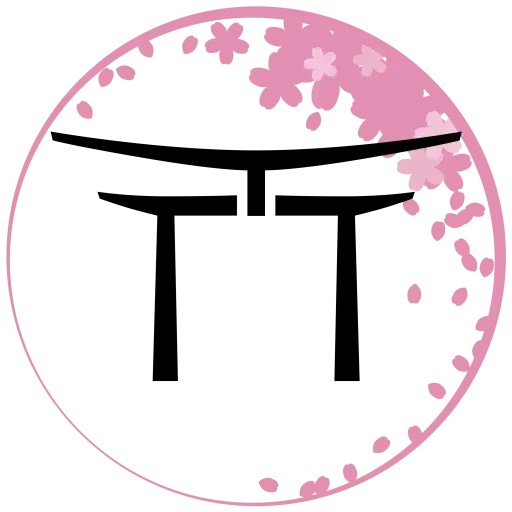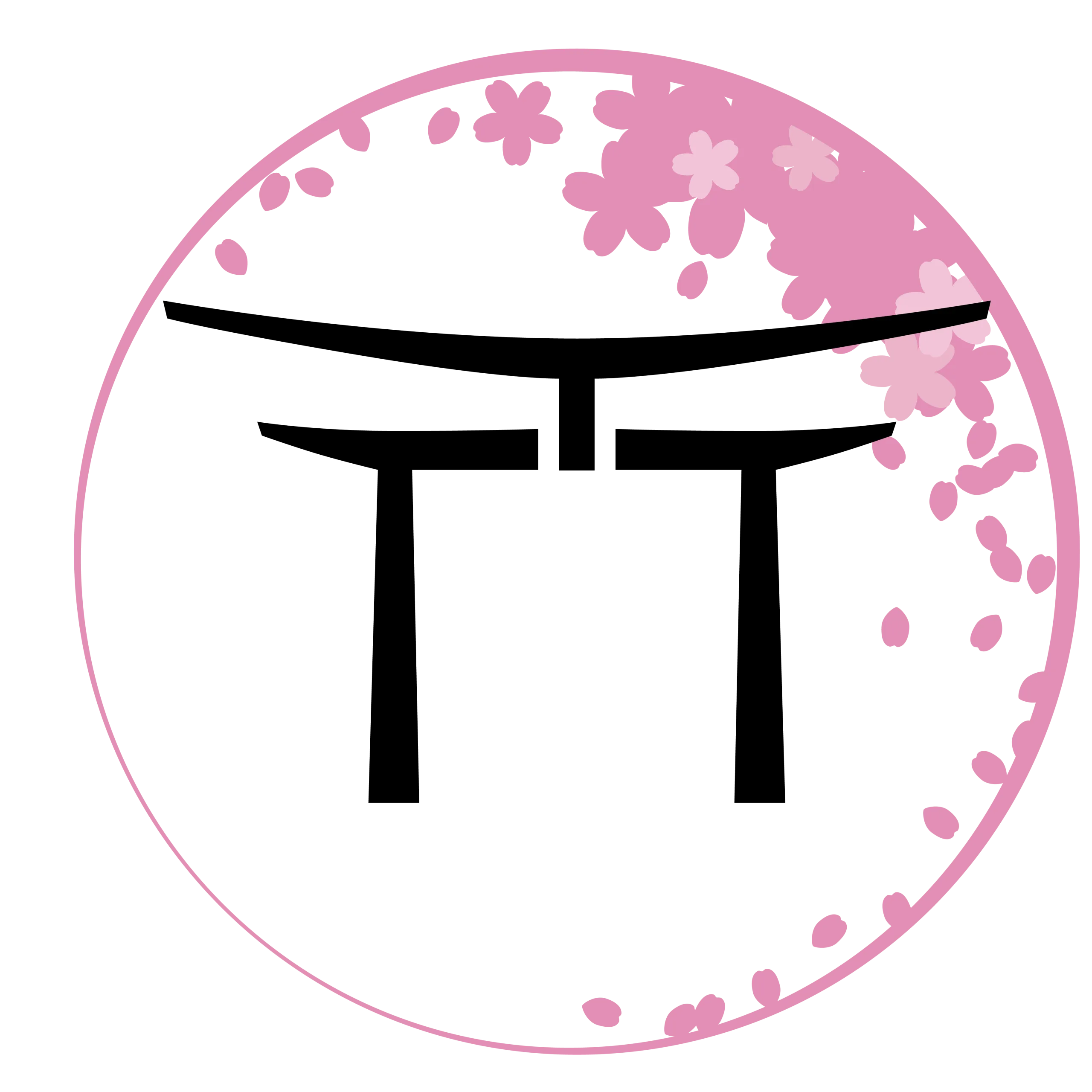How to Collect Goshuin Shrine and Temple Stamps in Japan
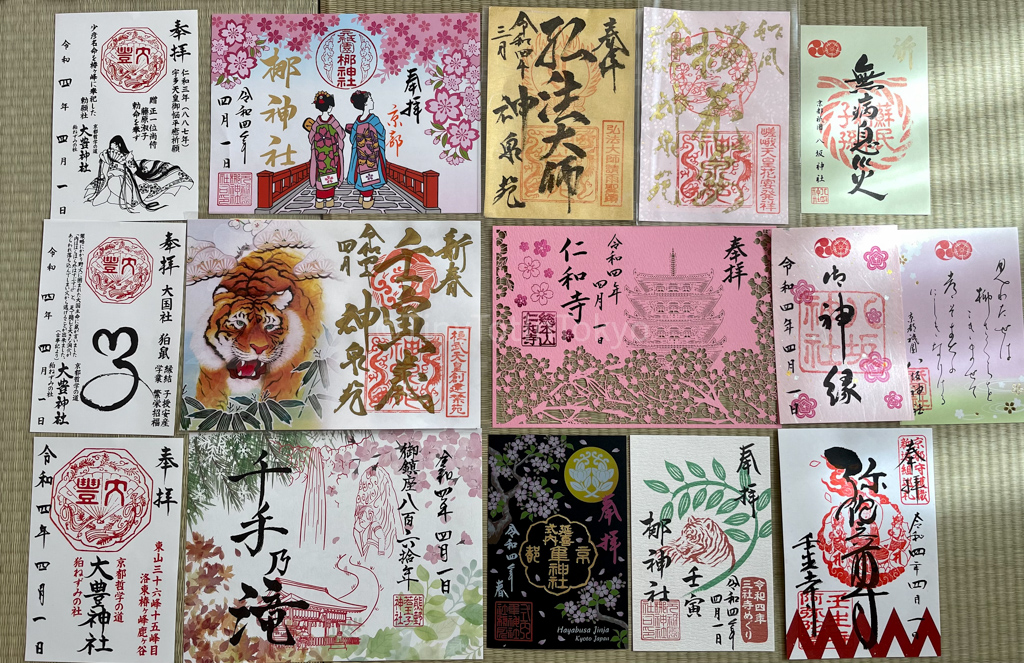
Last Updated on September 6, 2025 by Kay
Table of Contents
How to Get a Goshuin
Goshuin (御朱印) are stamps that you can receive from shrines and temples in Japan as proof that you visited. Alongside the vermilion stamps, a person working for the shrine or temple called a kannushi will write beautiful calligraphy using fude (a calligraphy brush) on a page with the name of the shrine and the date of your visit.
One goshuin typically costs around 300 yen, although special and limited-edition ones can cost up to 1000 yen (or more!). I’ll talk about these special and limited edition ones later in this article.
Most shrines and some temples offer goshuin. The larger the shrine or temple, the more likely they are to carry it.
You can buy these from a counter at the temple, although the location of the counter can be tricky to find at times. Sometimes goshuin are sold at the same spot as omamori (amulets), but other times they’re located in a completely different place.
The best thing to do is look for a sign with the kanji 御朱印 (goshuin) or simply ask, “Sumimasen, goshuin arimasuka?“.
Many shrines and temples do not accept credit cards or electronic payments, so make sure you have cash on you. Also, do not take a photo or video of the person writing your goshuin.
If this is your first time getting goshuin, I recommend buying a goshuincho, which is a book where goshuin is written inside. I’ll talk about this later in this article.
It’s important to note that you should pay your respects to the shrine or temple first before you get your goshuin. Before you enter the shrine grounds, bow at the torii gate. A temple does not have a torii gate.

Once inside, cleanse your hands. Go to the entrance of the main hall, drop a coin into the offering box, ring the bell if there is one, and then pray.
From here, there are slight differences between a shrine and a temple in terms of how you pray. At a shrine, this involves:
- bowing twice
- standing upright and then clapping your hands twice
- putting your palms together in a short prayer while slightly bowed
- bowing once more
At a temple, you simply bow with your hands together in prayer, so the steps are much simpler. There is no clapping involved.
What’s Written on Goshuin
Here is a brief breakdown of what you will find on goshuin. Below is an example of a goshuin for a temple.

1. The day I visited the temple.
2. The name of the temple deity in black calligraphy. The red vermillion stamp is the temple’s seal.
3. A vermillion stamp for the temple god and the word houhai (奉拝), which means “worship”.
4. The name of the temple.
The following is an explanation of what is on a goshuin from a shrine.

1. The day I visited the shrine.
2. The name of the shrine in black calligraphy. The red vermillion stamp is the shrine’s seal.
3. The word houhai (奉拝), meaning “worship”.
What Are Goshuincho?
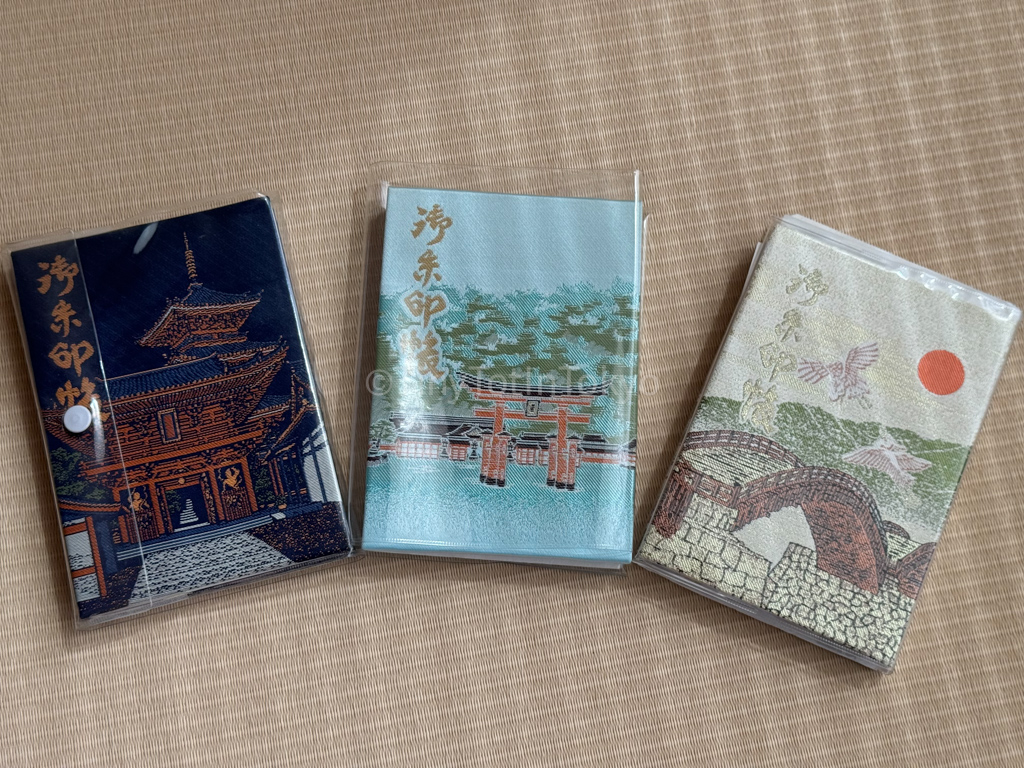
As mentioned earlier, you can receive goshuin in the form of a small piece of washi paper to keep or get a goshuincho (御朱印帳), which is a stamp book with blank pages where the goshuin can be directly written inside. You should use both sides of the paper. If you’re confused, the person writing the goshuin will help.
The cost of a goshuincho starts at 1000 yen but varies depending on the type and shrine or temple.
Each shrine and temple has its own unique goshuincho with various designs, such as cherry blossoms, the temple itself, or even anime characters, so selecting one is really fun.
And if you happened to forget your goshuincho or haven’t found the perfect one yet, there’s no need to worry. You can simply receive the goshuin on a single piece of paper, called haru type (貼るタイプ), that you glue into your goshuincho later. (I do this a lot!)
When you hand your goshuincho to the staff at the counter, make sure you open the book to the page you want them to write on. Sometimes you’ll be given a number to pick up your goshuincho later if it’s busy. Usually, this takes only a few minutes but it also depends on how crowded the shrine is. I wouldn’t expect to wait more than 30 minutes, though!
Limited Edition Goshuin
One really fun part about goshuin is that there are lots of limited edition ones. These are seasonal or offered during special times of the year such as New Year’s.

For instance, I got the goshuin pictured below from Asakusa Temple in Tokyo when the Japanese emperor changed. This was an important time in history as the era in Japan changed from Showa to Reiwa (令和) in May 2019. My daughter was born a few months later in the first year of Reiwa, making this goshuin particularly important to me.

More often than not, these limited edition goshuin are given as haru type due to their popularity or type. For instance, limited edition ones may come in elaborate and colorful designs or be written on special paper. Some even have dried flowers on them!
You may also find that these limited edition types take up two pages rather than one. If you’re like me, you might feel a bit bad about folding the paper so it fits into the book but there’s no problem simply framing it to decorate your home.
My Favorite Unique Goshuin in Japan
I’ve amassed quite a collection over the years so I wanted to share my favorite unique ones and where I got them. Keep in mind that many of these are seasonal or limited editions, meaning that you might not be able to get the exact same one.

Location: Katsuoji Temple in Osaka. This goshuin is available year-round.

Location: Taishido Hachiman Shrine in Tokyo. Designs vary depending on the year/season. The goshuin above was received in the Year of the Dog in 2018.

Location: Sarue Shrine (Right) in Tokyo and Iki Shrine (Left). Designs vary depending on the year and season. The goshuin above were received during the Year of the Dog in 2018.

Location: Iwashidu Shrine in Takarazuka, Hyogo. This is a seasonal goshuin but they carry Tezuka Osamu goshuin year-round.
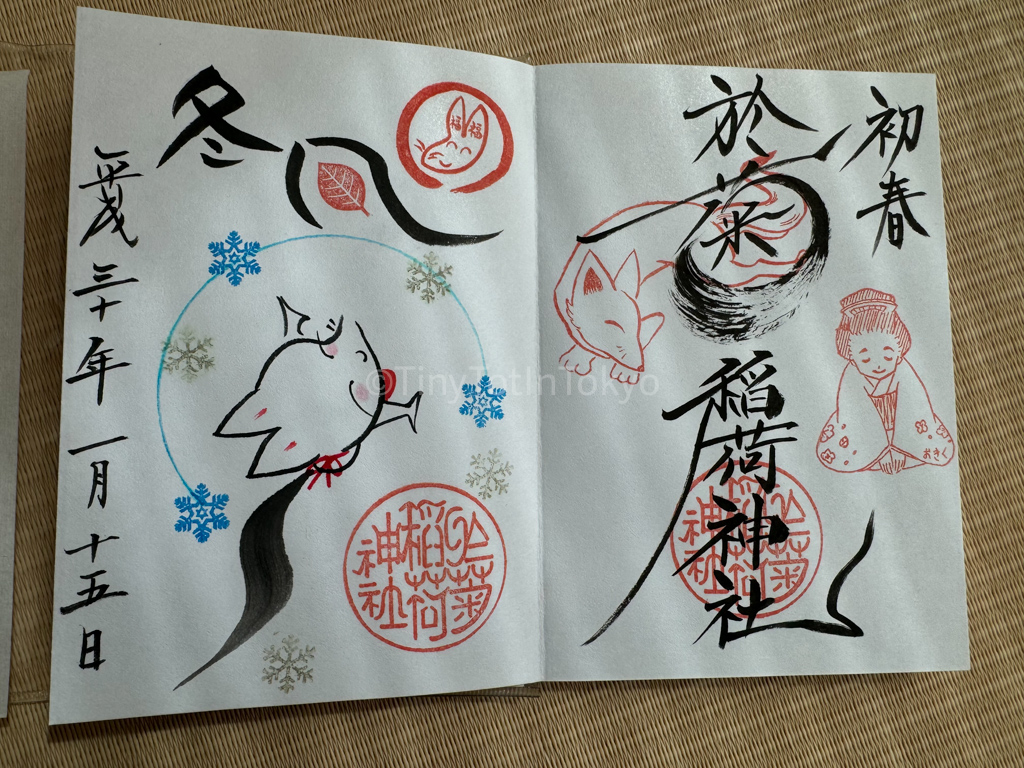
Location: Okiku Inari Shrine in Gunma Prefecture. Their goshuin change monthly.
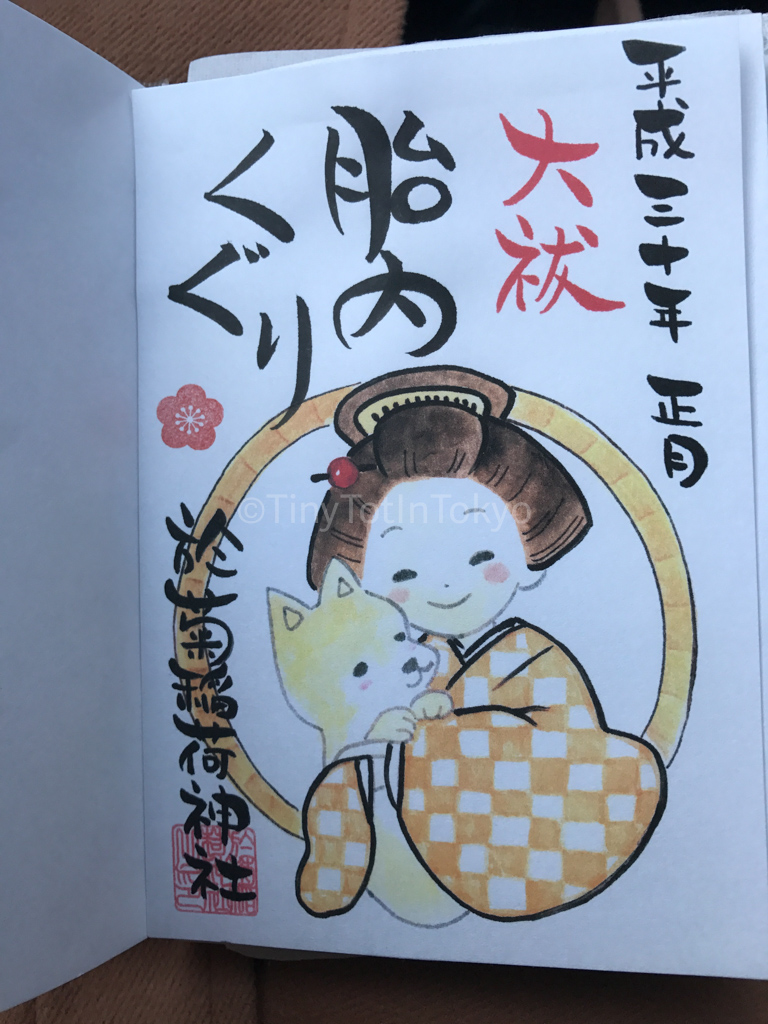
Location: Okiku Inari Shrine. This was a special goshuin for the Year of the Dog in 2018.

Location: Daigo-ji in Kyoto. The goshuin above is a seasonal one only available in autumn. They have different goshuin depending on the season.

Location: Kannon-ji in Gunma. They have a wide selection of goshuin, so many that it can be hard to choose!

Location: Kitano Tenmangu in Kyoto. I believe this goshuin is available year-round.

Location: Youkoku-ji in Kyoto. This is a seasonal goshuin.

Location: Ooharano Shrine in Kyoto. This are seasonal goshuin for autumn, and one has real momiji leaves!

Location: Another seasonal autumn goshuin from Ooharano Shrine in Kyoto.

Location: Houkoku Shrine in Osaka, located in the Osaka Castle grounds. This is a seasonal goshuin for spring.
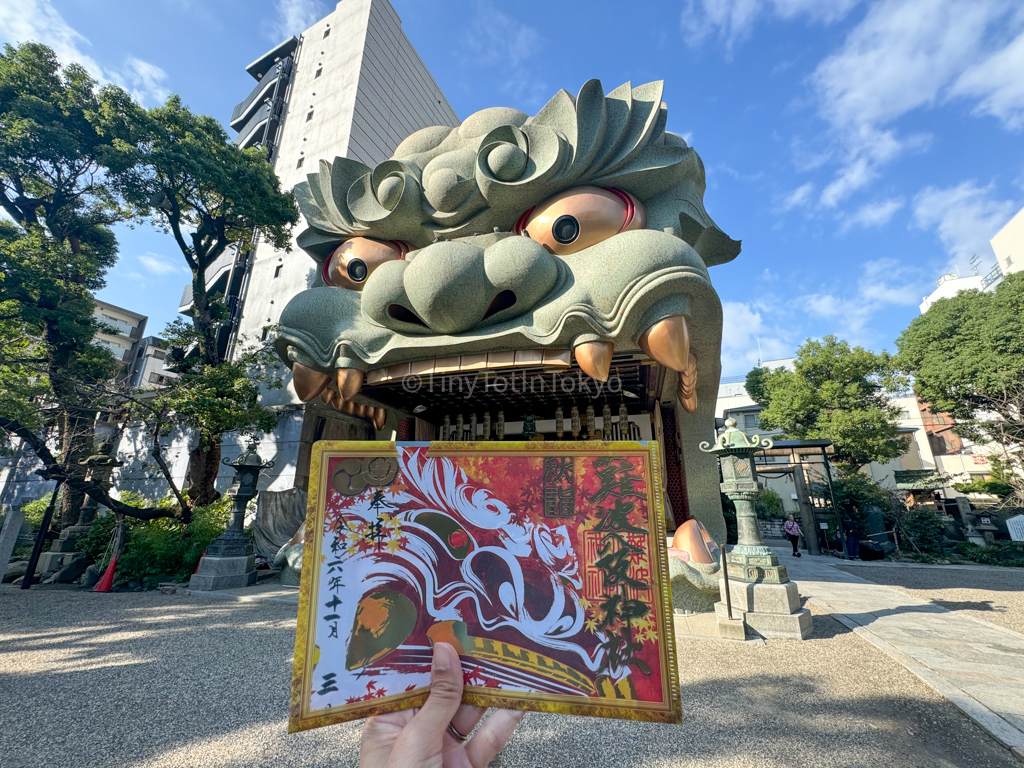
Location: Namba Yasaka Shrine in Osaka. This is a seasonal goshuin for autumn and came in a free limited edition folder.
Wrap-up: Goshuin in Japan
I hope this look at goshuin culture in Japan has been helpful. They truly make the perfect souvenir to remind me of a shrine or temple visit and it’s become one of my favorite hobbies in Japan.
FAQ
Can foreigners collect goshuin in Japan?
Yes, absolutely! Anyone can collect goshuin, even kids!
How much does goshuin cost?
One goshuin ranges from 300 yen to 1000 yen, depending on the type. Make sure you have cash on you when purchasing one.
Can I get a goshuin even if I’m not religious?
Yes, you can! You don’t need to be Buddhist or Shinto to collect goshuin, just be respectful.
